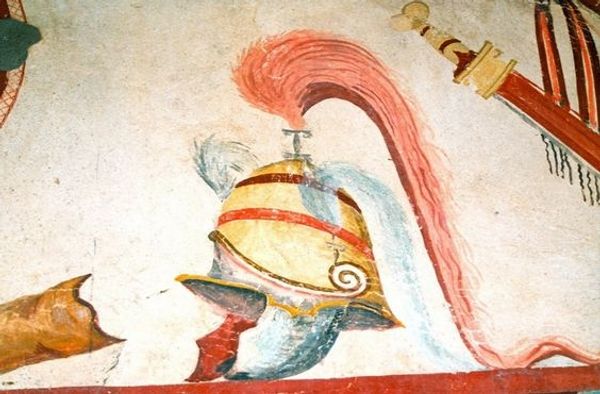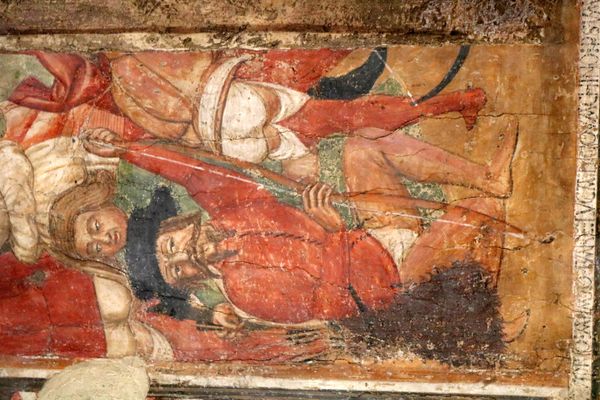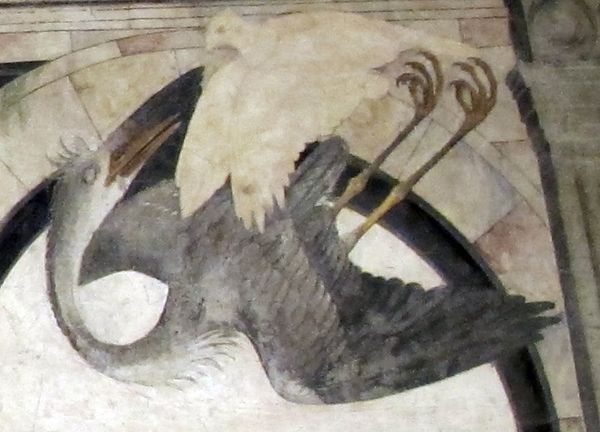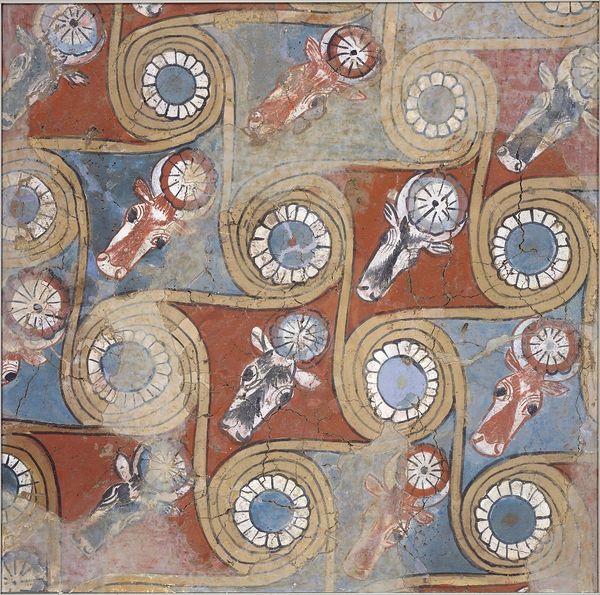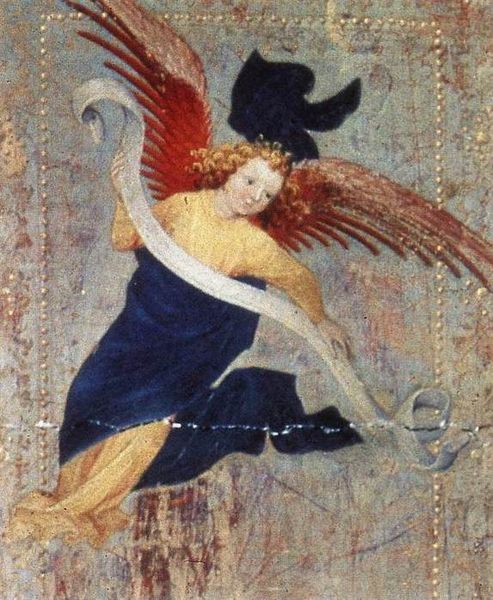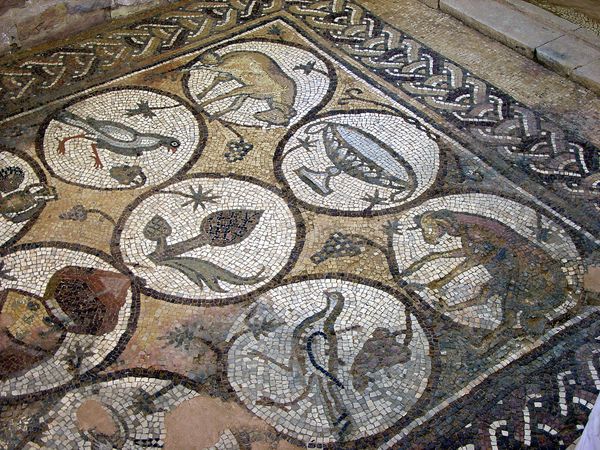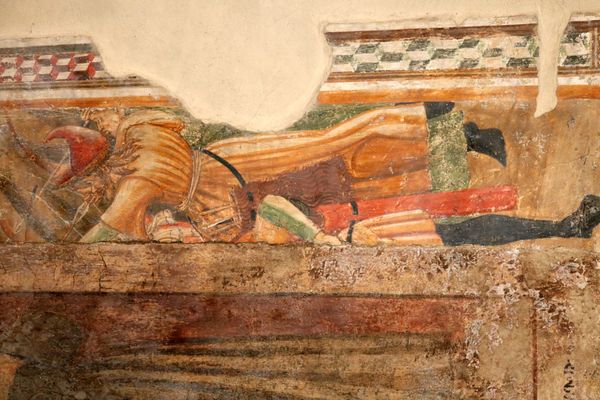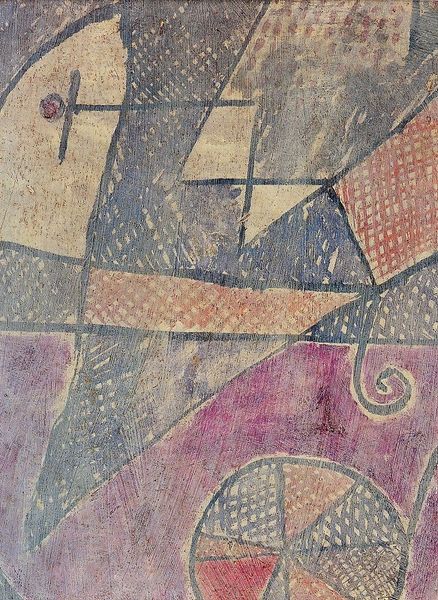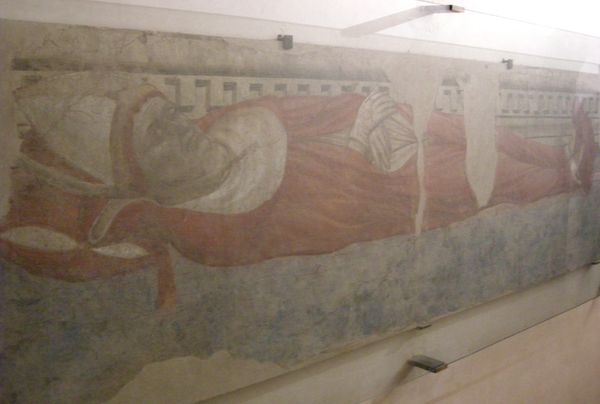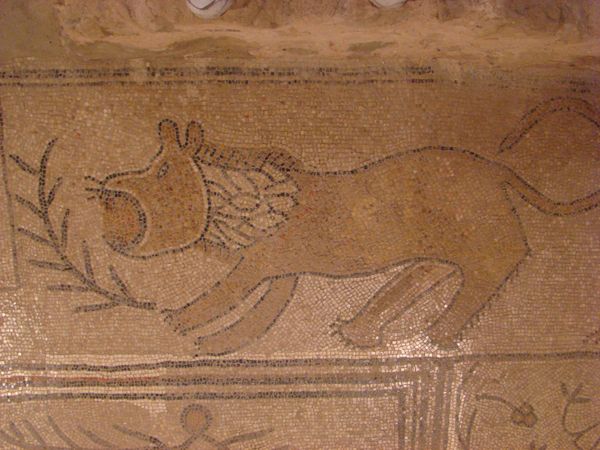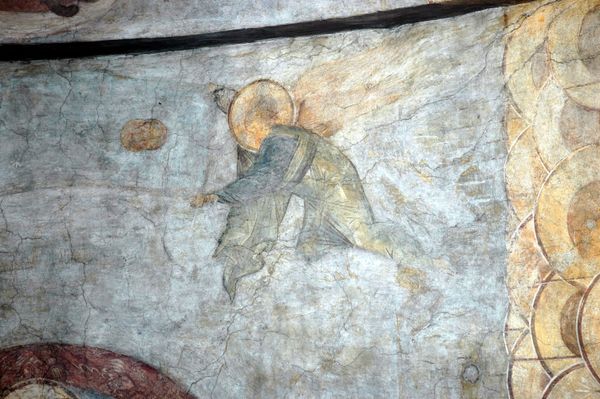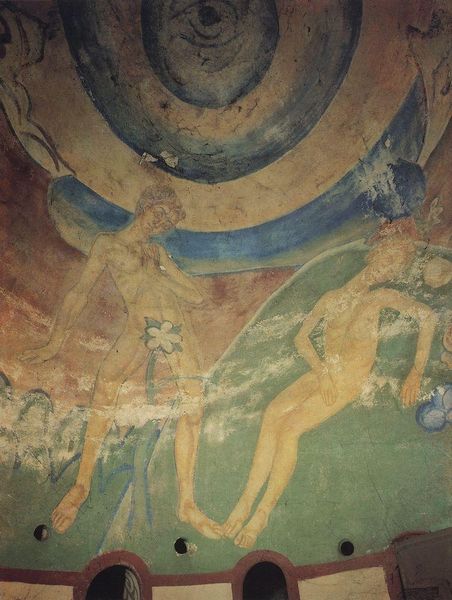
Military Armor, Arms, and Gear from the Tomb of Lyson and Kallikles in Ancient Mieza, Greece 150 BC
0:00
0:00
painting, fresco
#
painting
#
greek-and-roman-art
#
painted
#
figuration
#
fresco
#
ancient-mediterranean
Copyright: Public domain
Editor: This fresco from 150 BC, titled "Military Armor, Arms, and Gear from the Tomb of Lyson and Kallikles", presents a vivid collection of military objects. The colors are really striking, almost bold, but the fragmented condition of the fresco is also evident. What can you tell me about this work? Curator: From a materialist perspective, let's consider the fresco itself: this isn't some portable artwork; it’s part of a tomb. This speaks volumes about how materials and labor were invested in commemorating military power. These arms aren't just represented; they are materially present as a painted offering within a specific architectural space. Editor: That’s interesting. I hadn’t considered the choice of fresco and its location as part of the artwork's meaning. So, the act of making and placing it there becomes central? Curator: Exactly! We should think about the pigments, the plaster, and the labor involved in creating this image *in situ*. What local materials were accessible for pigments? Who was commissioned to do the labor? What does this suggest about Mieza's economy and social hierarchy? And the tomb, as a repository of earthly remains, challenges any simple binary between art and object, consumption and art making. Editor: So, we are not just looking at depictions of weapons but thinking about the broader societal and economic implications? The availability of resources, the artisan’s status... Curator: Precisely. The "arms and gear" represented weren't just status symbols; they represent networks of material extraction, craftsmanship, and ultimately, trade, shaping power dynamics. A modern eye might almost miss them if judging only from some vague classical ‘beauty’ standard, instead of examining the modes of making in detail. Editor: That’s really given me a lot to think about. Thank you. I will never look at frescoes the same way. Curator: It changes your perception about the concept of value creation when you view art objects, indeed.
Comments
No comments
Be the first to comment and join the conversation on the ultimate creative platform.
